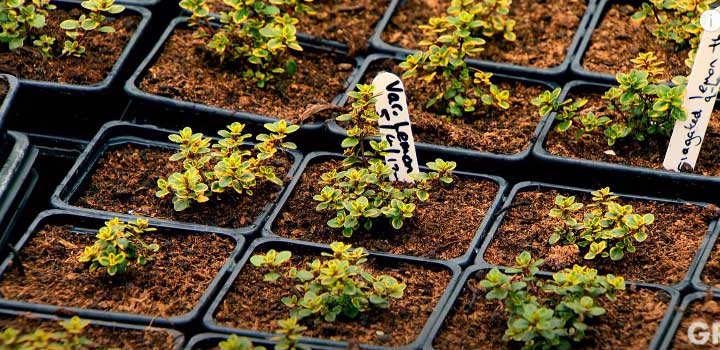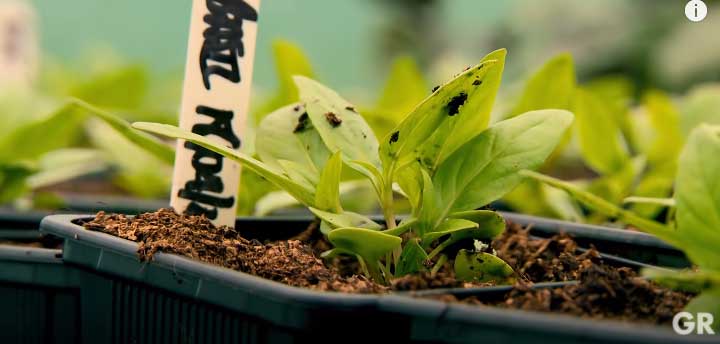The gardening community is growing day by day. It has come to a point where topics such as how to fertilize herbs are pretty hot and highly debatable. But why is the topic debatable? Well, there are plenty of different ways of fertilizing the shrubs.
While one gardener will prefer one method, the others would like to follow the others. Nonetheless, as you have stumbled upon this article, we believe that you do not have an idea regarding any of the methods. Well, there is nothing to worry about because we are going to fill you in.
Using Fertilizer At a Specific Time

Among the different available methods, this method is the one that most of the gardeners will follow. They know that there is a difference between fertilizer and plant food. And it would not be a wise choice to provide both at the same time.
That being said, these are the things that you would have to consider if you plan to follow this method:
Fertilize At the Beginning of the Growth Cycle
As you probably know by now, most of the herbs will start growing during the spring. And the early spring would be the best time to use fertilizer for herbs. At that period, the shrubs will gain most of the benefits through the fertilizer’s nutrients.
Do Not Fertilize When There Is No Need For It
A couple of outdoor herbs will stay healthy and grow reasonably well without needing any fertilizer. All you need to do is water them regularly and keep them at a place where there is an adequate amount of sunlight. And the shrubs that we are talking about are sage, chamomile, and lavender.
Refrain From Fertilizing the culinary Plants
In order to keep the flavors intact, it would be a wise choice not to fertilize the culinary plants. Yes, the fertilizer will make them grow more prominent, but it might also turn them flavorless.
Fertilize During Planting
Another popular method of using fertilizer on the shrubs is to use it during the plantation period. And the things that should be in your mind for following this method are as follows:
Use the Right Fertilizer
While using fertilizer before planting the shrubs will enhance the growth, it can turn the other way around if you do not use the right one. For the fruit herbs, the perfect fertilizer for Zoysia Grass is a must. And for the others, water-soluble organic ones are going to work like a charm.
Mix the Fertilizer With The soil Properly
Getting the right fertilizer will not be enough if you do not know how to put it in the ground. We would generally mix about one to four grams of fertilizer on the potting soil before planting the shrub. This way, the fertilizer gets deeper into the soil instead of being in one place.
You can use a spoon and your hands to mix the soil properly. Spread the fertilizer around properly before planting the shrub.
Spread the Center and Compress the Sides
Before you put the plant into the ground, use a trowel or your hands to spread the soil from the center outwards. This spreading maneuver will ensure that they can get an adequate amount of fertilizer wherever the roots reach.
Additionally, compress the sides. Use the trowel and push the soil down after plantation. By doing this, you can make sure that the roots are adequately surrounded by dirt. Also, they will settle in properly, which will result in the herb being stable.
Water the Plants
Right after planting the herbs, you should water them. But instead of using water straight from the tap, warm it up a bit. Pour about 2 to 3 cups of water over the sure. After this, the water-soluble fertilizer will go straight to the roots of the shrubs and ensure that they absorb all of the nutrients right away.
Use the Fertilizer to Maintain the Herbs
Many of the gardeners prefer to maintain the shrubs by applying fertilizer once in a while. This process ensures that the plants grow properly and the rate of growth is at the right amount. And these are the things that you would have to keep in your mind to follow this procedure:

Fertilize Once Every Three to Six Months
Keep the period in your mind. It is from three to six months. This range is applicable for all types of shrubs. But how will you know when to apply the fertilizer? Well, for that, you need to check the condition of the plants. If you feel like they need an extra push, use the fertilizer right away.
On that note, we would recommend fertilizing the herbs at the same time every year. This scheduling will make sure that they are well equipped with nutrients during the rough and dry months.
Use a Proper Mix Each Time
To maintain adequate growth, we would highly recommend mixing the fertilizer at the 5-10-5 ratio. The things that you will need for this mix are nitrogen, potash, and phosphate. And these are generally available in most of the local gardening stores.
Sprinkle Some of the Fertilizer on the Top
Mix one half of the mixture into the soil and keep the other half separate. Use that half to sprinkle on the top. However, while working on the soil, do not go fully into the roots. That will make the roots absorb more than the required amount of nutrients.
Additionally, monitor the overall growth of the plants after applying the fertilizer. If the plants are growing is too fast, it would be wise to cut down a bit on the fertilizer. And if the growth is not as expected, apply a bit more on the next session.
Final Words
Without learning how to fertilize herbs, it will be pretty hard to get the plants growing and striving properly. So, pick one of the methods that we have discussed above and keep all the things in your mind while following the process.
If you follow the process correctly, we can assure you that the herbs should grow at the right rate!